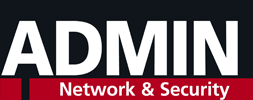Collaborative online office solutions
Many Cooks
Groupware solutions enable collaborative teamwork. However, conventional documents such as texts, tables, or presentations are often still created conventionally at individual workstations. Office suites for collaborative work on documents have long outgrown their infancy. This article examines the possibilities offered by the individual office packages.
Workflow
Office solutions for collaborative work support very flexible use. On the one hand, they extend groupware packages like EGroupware, Zimbra, or Kopano. On the other hand, they also integrate into self-hosted cloud solutions such as Nextcloud or ownCloud. Some network-attached storage (NAS) systems also come with suitable apps in their software stores. You don't necessarily need dedicated servers for collaborative editing. Sometimes the office packages run both in the cloud and on the local workstation and simply synchronize the data.
In all cases, collaboration is not limited to editing documents. Users can also insert comments, to which other users can respond. A module for versioning completes the package. If desired, office solutions save different editing states of a document and reconstruct them again as needed. Users always have access to older versions of documents, which helps them to compare documents, among other things.
Today, in larger work environments, people use a variety of office formats, or employees simply exchange many documents with customers outside their own IT infrastructure. In such cases, the quality of the filters for import and export is critical. The more sophisticated the filters are, the less manual rework is required.
However, the use of proprietary software entails some limitations. For example, documents that are available in the various Microsoft (MS) formats and contain macros do not usually run correctly in the popular office suites of other manufacturers. Because macro languages
...Buy this article as PDF
(incl. VAT)
Buy ADMIN Magazine
Subscribe to our ADMIN Newsletters
Subscribe to our Linux Newsletters
Find Linux and Open Source Jobs
Most Popular
Support Our Work
ADMIN content is made possible with support from readers like you. Please consider contributing when you've found an article to be beneficial.





